Follow the Path of Pilgrims on the Ancient Ontake Kodo Trail
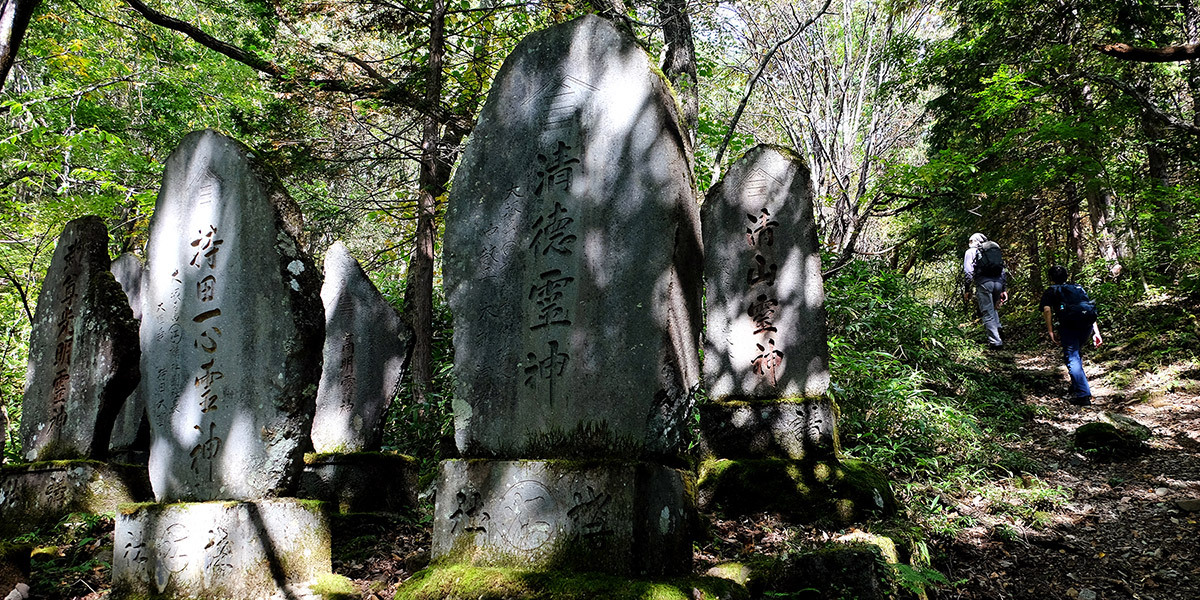
Hike on a historic trail at the foot of a holy mountain, participate in an age-old purification ritual under a sacred waterfall, and wrap it all up with a celebratory meal.
The massive form of Mt. Ontake looms large over the Kiso Valley. This 3,067-meter, active stratovolcano is Japan's 14th tallest peak and its second-highest volcano, behind Mt. Fuji (3,776 meters). One look at the mountain's impressive form evokes a mix of intrigue and awe, along with a sense of foreboding at the enormous energy stirring below the surface.
Ontake's power to inspire reverence and dread has drawn those in pursuit of the supernatural to this area for thousands of years. Numerous shrines and countless religious monuments occupy the quiet forests at the base of the mountain. They are connected by a network of pilgrimage trails that have carried devotees to Mt. Ontake since ancient times and are known collectively as the Ontake Kodo. A walk along these one-of-a-kind paths is a must-do experience for those looking to escape the ordinary and connect more deeply with Japan's nature, history, culture, and tradition.
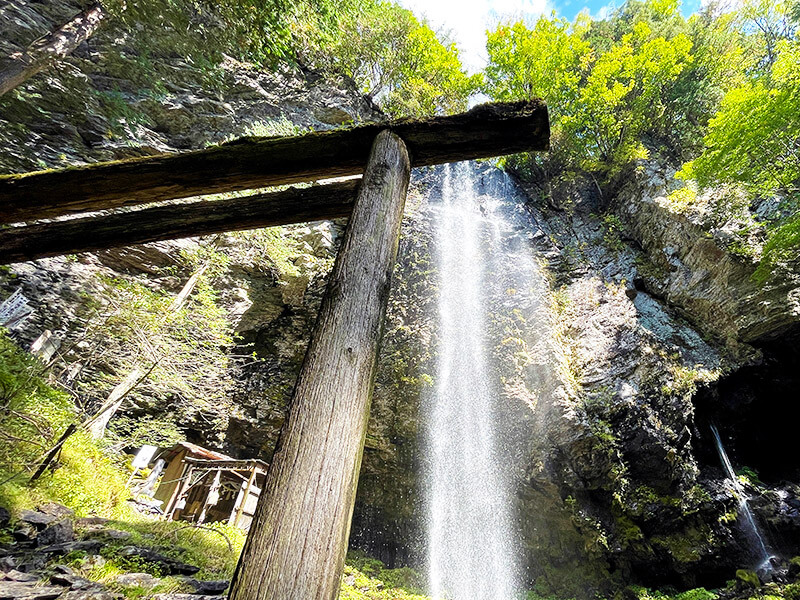
Read on to learn more about Mt. Ontake, the significance of the Ontake Kodo trail and the incredible experience that awaits you on your visit.
The History of Ontake and Mountain Worship
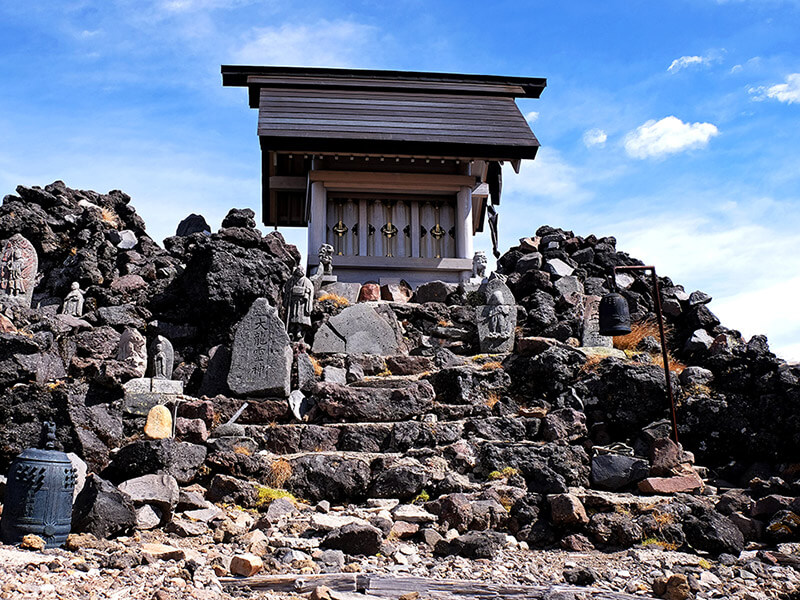
Japan's indigenous religion of Shinto is rooted in the worship of nature, and divine spirits known as kami were thought to inhabit every element of the natural world. Mountains featured prominently in this prehistoric belief system, and those that were exceptionally beautiful or distinct, like Ontake, were held particularly sacred. Around the 8th to 12th centuries, these tenets of old Shinto began to fuse with principles of esoteric Buddhism as well as various folk and shamanistic religions to form Shugendo, or mountain asceticism. Practitioners of Shugendo, known as yamabushi, sought enlightenment through arduous rituals undertaken on and around holy mountains.
The Rise of Ontake-kyo and the Ontake Kodo

Ontake quickly became an important training ground for yamabushi, whose practices here slowly evolved into a unique brand of belief specific to this area. For several hundred years, access to the mountain was tightly controlled, restricted to the most devout and dedicated followers. Only those who first completed a 100-day period of devotional rites and ritualistic purification were permitted the opportunity to scale the mountain and worship at the sacred summit shrine. This grueling three-month process was spent sheltering in caves, adhering to a strict diet, chanting, meditating, and cleansing the mind and body under powerful waterfalls four times per day.
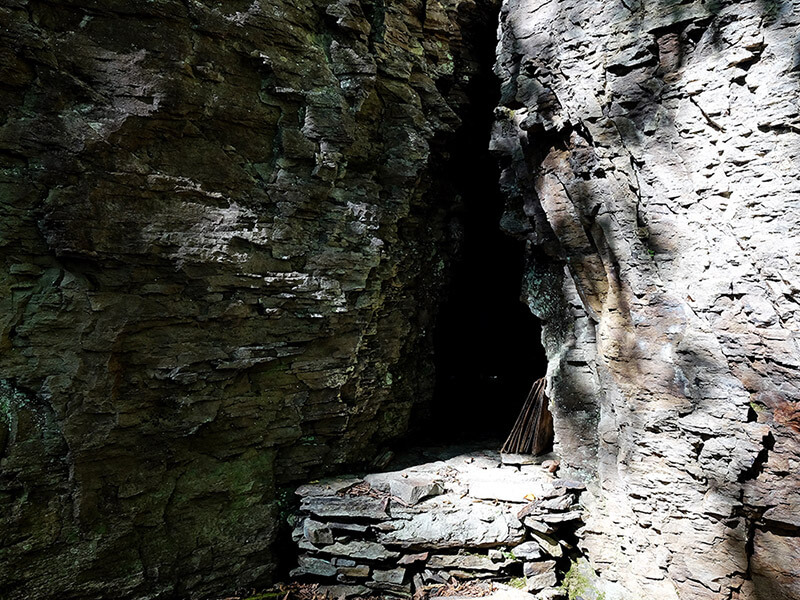
At the end of the 18th century, interest was growing in Ontake and a movement to open up the mountain and allow ordinary people to partake in its spiritual power was spearheaded by a pair of prominent ascetics named Kakumei and Fukan. Through their efforts, the one hundred days of austerity were dropped as a requirement, and two new climbing routes were established: the Kurosawa-guchi trail in 1782, followed by the Otaki-guchi trail ten years later.
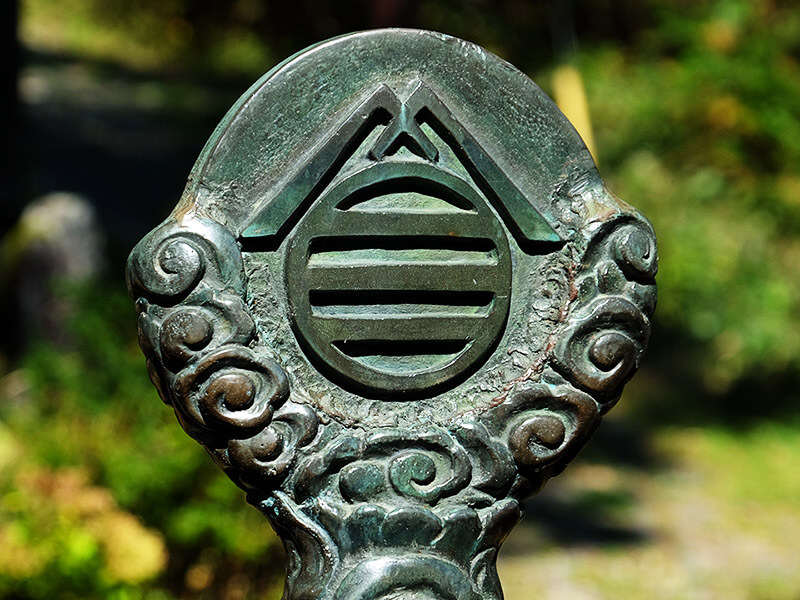
These centuries-old paths are now referred to as the Ontake Kodo, and the complex, unique and fascinating ideology held by those who walk them are what is known as Ontake-kyo (the Ontake Faith). With the new trails and relaxed standards, people flocked to the mountain and the faith in large numbers. It is estimated that at its peak the Ontake Faith claimed around 1,000,000 followers, though the number is down to a mere 50,000 today.
Walking the Ontake Kodo Trail
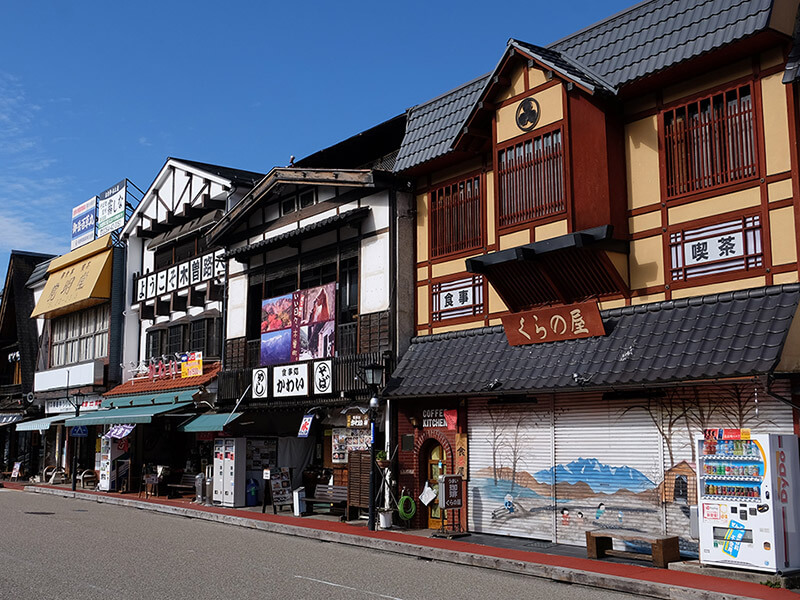
The traditional starting point of the Ontake Kodo is the Gyonin-bashi bridge, a 600-meter walk from JR Kiso-Fukushima Station. However, for the most part, the original forest path leading from there to the village of Otaki no longer exists. Instead, it's recommended to drive or take a bus/taxi from the station to the Otaki Tourist Information Center (about 20 kilometers) and begin where the old, preserved trail picks up.

Otaki village recommends the route from the Otaki Tourist Information Center to Hakkaisan Shrine, which is around 9 kilometers in length and climbs from 925 meters to 1,670 meters. It's best to budget around 5 to 6 hours for the entire hike, but possible to save time by walking only a portion of the trail. On my recent visit, we only went as far as Juni Daigongen Shrine before doubling back to Kiyotaki and Shintaki waterfalls.
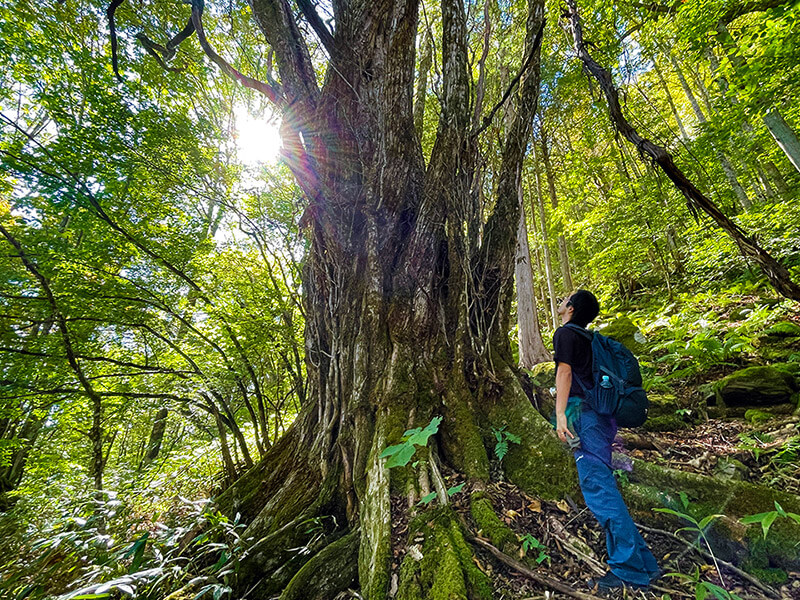
The Ontake Kodo doesn't earn the same attention as the nearby Nakasendo, but it's every bit as significant and even more atmospheric. It’s not a trail you simply walk, it’s one you experience. It makes a great trip on its own but could also be an excellent side trip for those already passing through Kiso on the Nakasendo or a fascinating addition to a climb to the summit of Mt. Ontake.
Details
Nearest Station: Kiso-Fukushima Station
Start Point: Otaki Village Tourist Information Center
End Point: Hakkaisan Shrine
Distance: 9 kilometers
Average Time to Complete: About 5 to 6 hours
Points of Interest Along the Trail
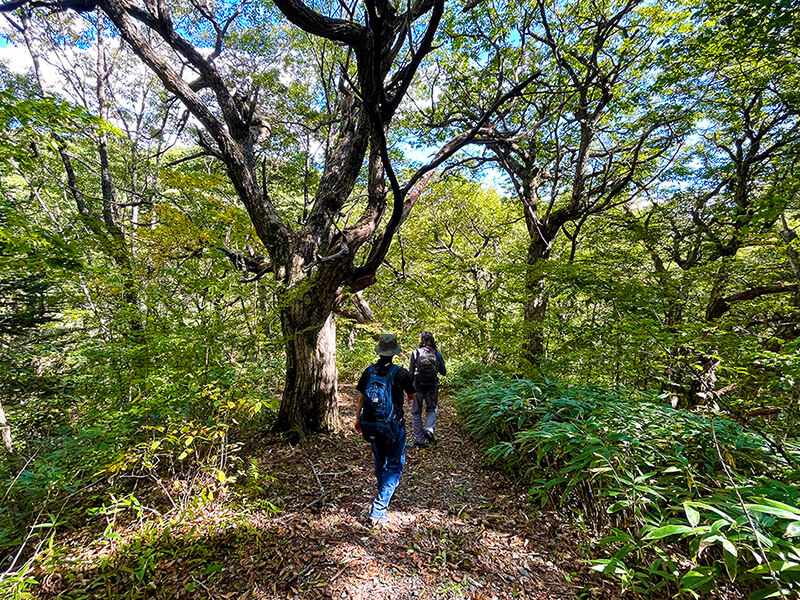
There are many points of interest along the way and it's hard to understand and appreciate their meaning without a proper explanation. For this reason, it is highly recommended to go with a local guide from the Kiso Ontake Tourism Office or the village of Otaki. Some basic introductions for a few of the route's major sights are provided below to help you get a better overall view of what's in store for your visit.
Ontake Satomiya Shrine

A huge, iron torii gate stands at the base of a multi-tiered staircase leading up to a smaller, stone one. This second gate at the edge of the forest marks the main entrance to the Satomiya Shrine. A visit to pray here is essential for kicking off a successful pilgrimage.
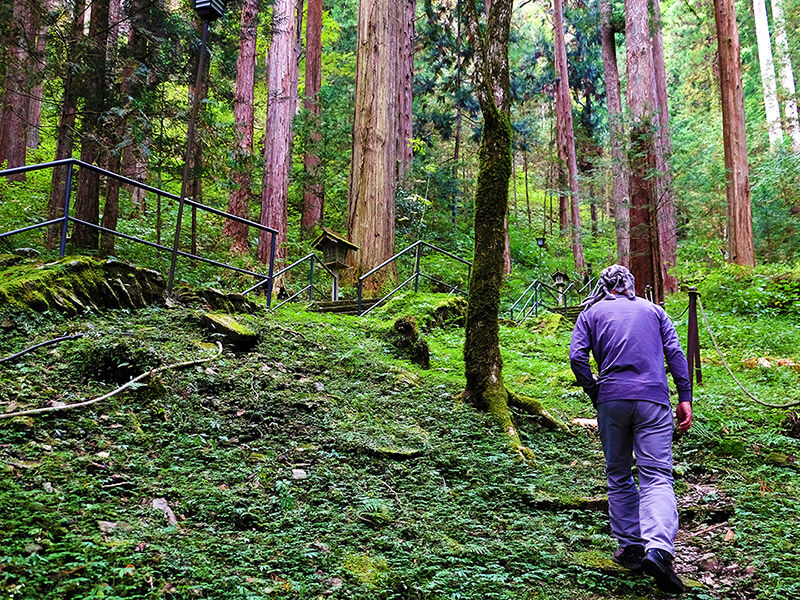
The main shrine building rests against an imposing rock wall and is reached by climbing several hundred moss-covered stone steps through a forest of towering trees.
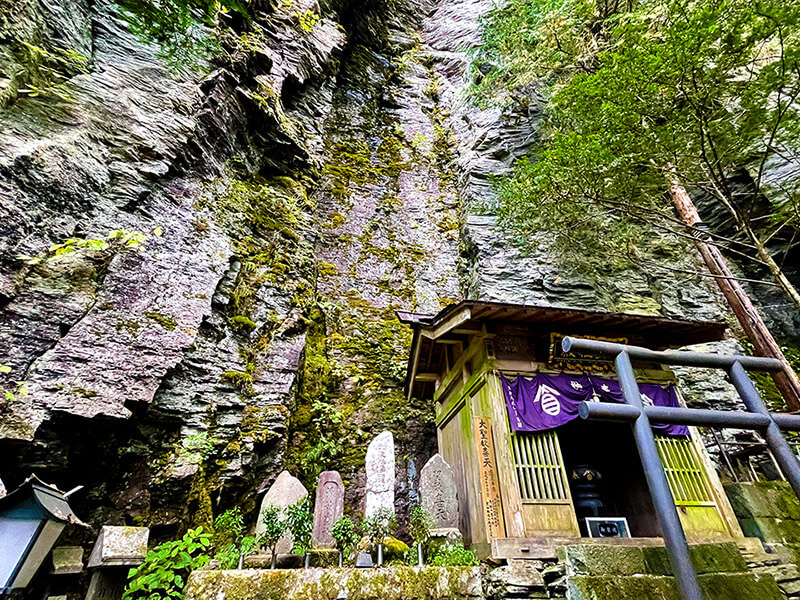
The beauty and grandeur of the setting make it one of the most atmospheric stops along the trail. If you're lucky and the main shrine is open, be sure to take a look at the magnificent tengu masks hanging on the back wall.

Reijinhi

Reijinhi signify one of the most unique elements of the Ontake Faith. Pilgrimages are conducted by groups of believers known as ko who are often based in areas of Japan far removed from Mt. Ontake. Members travel together periodically to walk the Ontake Kodo in white pilgrim's clothes, perform their necessary rituals, and pay their respect to the mountain, culminating with a visit to the summit and its many spiritual sites. The leaders of these groups, known as sendatsu, return year after year, acting as the spiritual and physical guides for their followers.
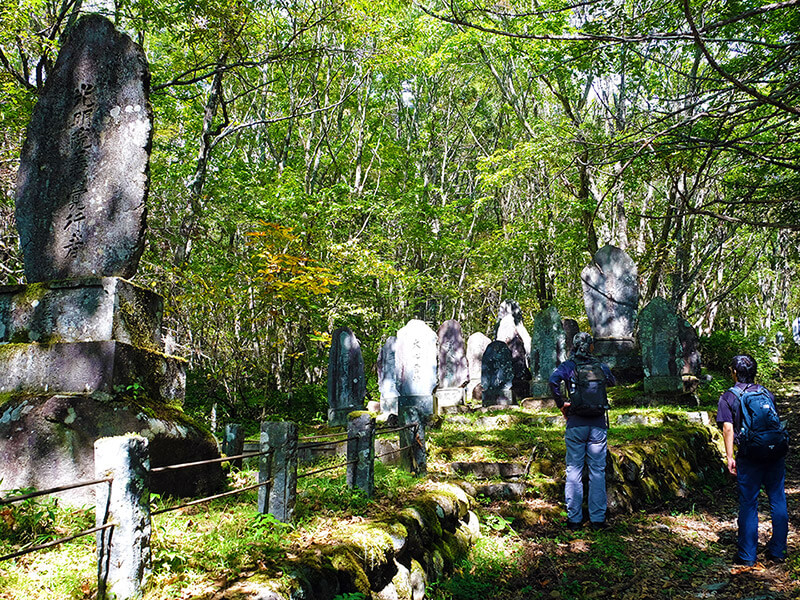
At the end of their tenure, sendatsu can petition to erect a stone slab engraved with their name and the number of times they have scaled Ontake as part of a ko pilgrimage. Doing so ensures their spirit will return to the mountain upon their death.
Omata Sansha Shrine
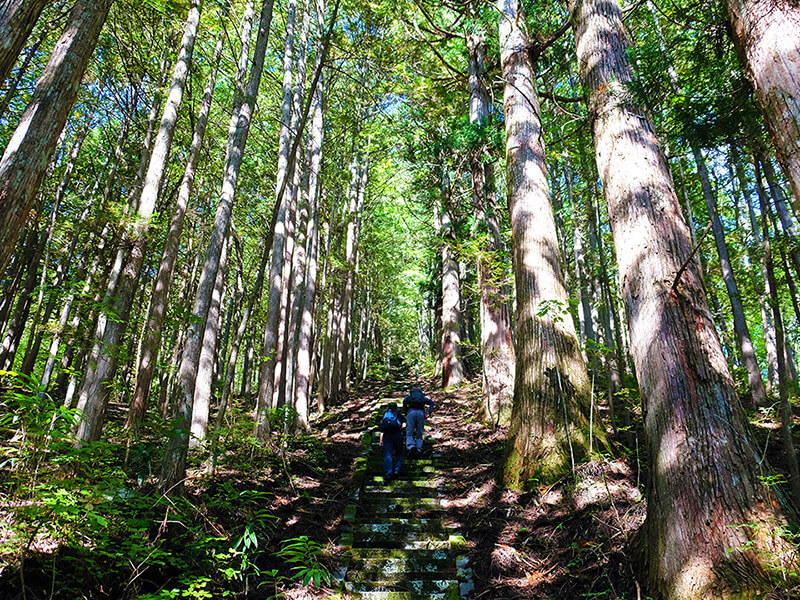
This monument to the Three Great Gods of Ontake sits at the end of another long and steep set of stairs, 383 to be exact, which are meant to symbolize the strenuous ascent of Ontake itself. The gods are enshrined at the foot of a huge rock formation, and it is said that those who pray here are conferred the same merit as those who climb to the peak of Ontake.
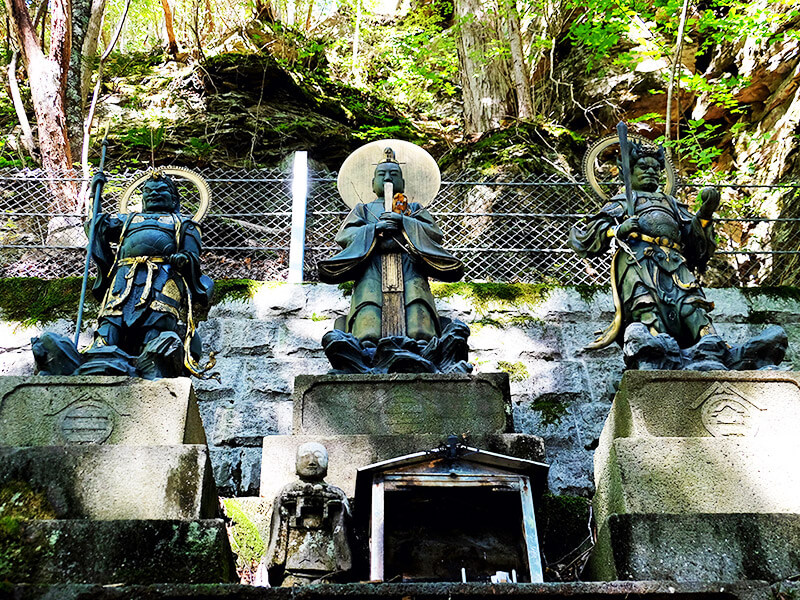
Juni Daigongen Shrine

This shrine is dedicated to Konohanasakuya-hime, a goddess believed to aid in fertility, offer protection in childbirth, and ensure that children are raised healthy. Those looking for a touch of divine favor can take home one of the saruboko dolls (also known as sarubobo dolls in other regions) on display and keep it as a good luck charm. When their prayers have been fulfilled, they are to make 12 of their own saruboko, return to the shrine and offer them in thanks to the goddess.

The shrine building itself is rather small and simple, but an exploration of the nearby grounds reveals statues in the likenesses of an extensive and eclectic mix of gods. So many seemingly unrelated figures assembled together in a single space illustrates the inclusivity and open-mindedness of the Ontake Faith.
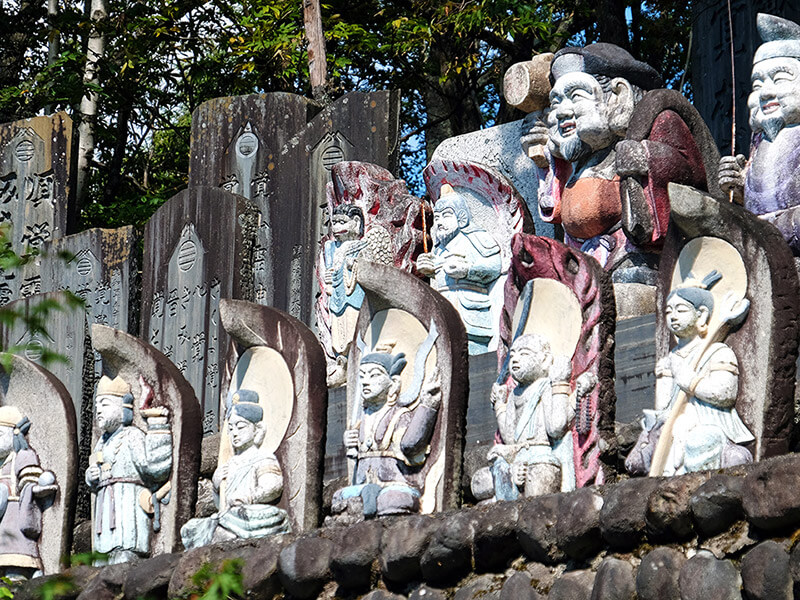
Kiyotaki and Shintaki Waterfalls
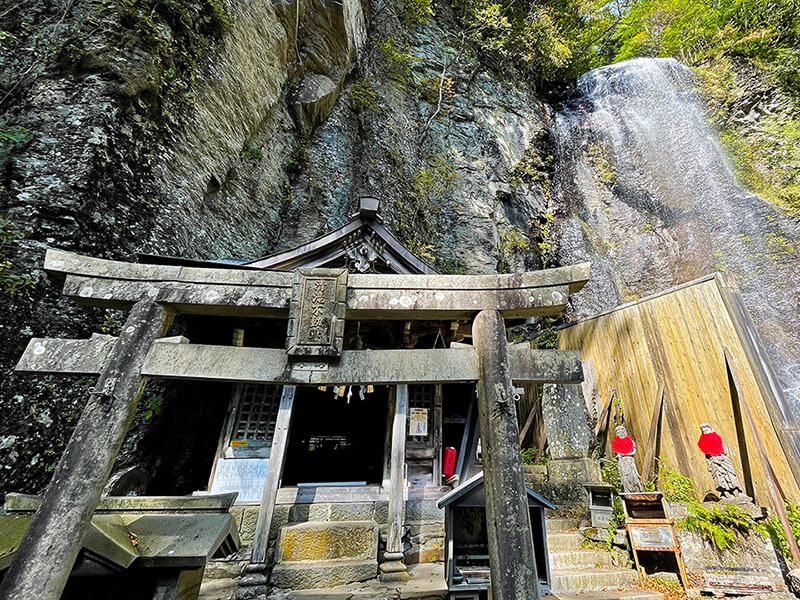
Ontake is blessed with an abundance of cold, clear waterfalls, many of which have been used by pilgrims and ascetics over the course of history for performing purification rites. Two of these are the beautiful Kiyotaki and Shintaki falls, standing at an impressive 30 and 50 meters tall respectively. Both are still used today for spiritual training and religious rituals, and it's not uncommon to see worshippers clad in white clothing standing under the falling waters with hands clasped and heads bowed during the busy summer months, though training can be done anytime except midwinter when the falls are frozen.
Experiences Along the Trail
Takigyo Waterfall Meditation

Takigyo, or waterfall meditation, is an essential ritual for purifying oneself before setting foot on the summit of holy Mt. Ontake. As a religious practice, it’s not something that can be casually undertaken by tourists, but that doesn’t mean it’s completely off limits. In recent years, Kurumizawa-san, the owner and operator of the ryokan of the same name, has begun guiding visitors through the ritual of waterfall meditation.
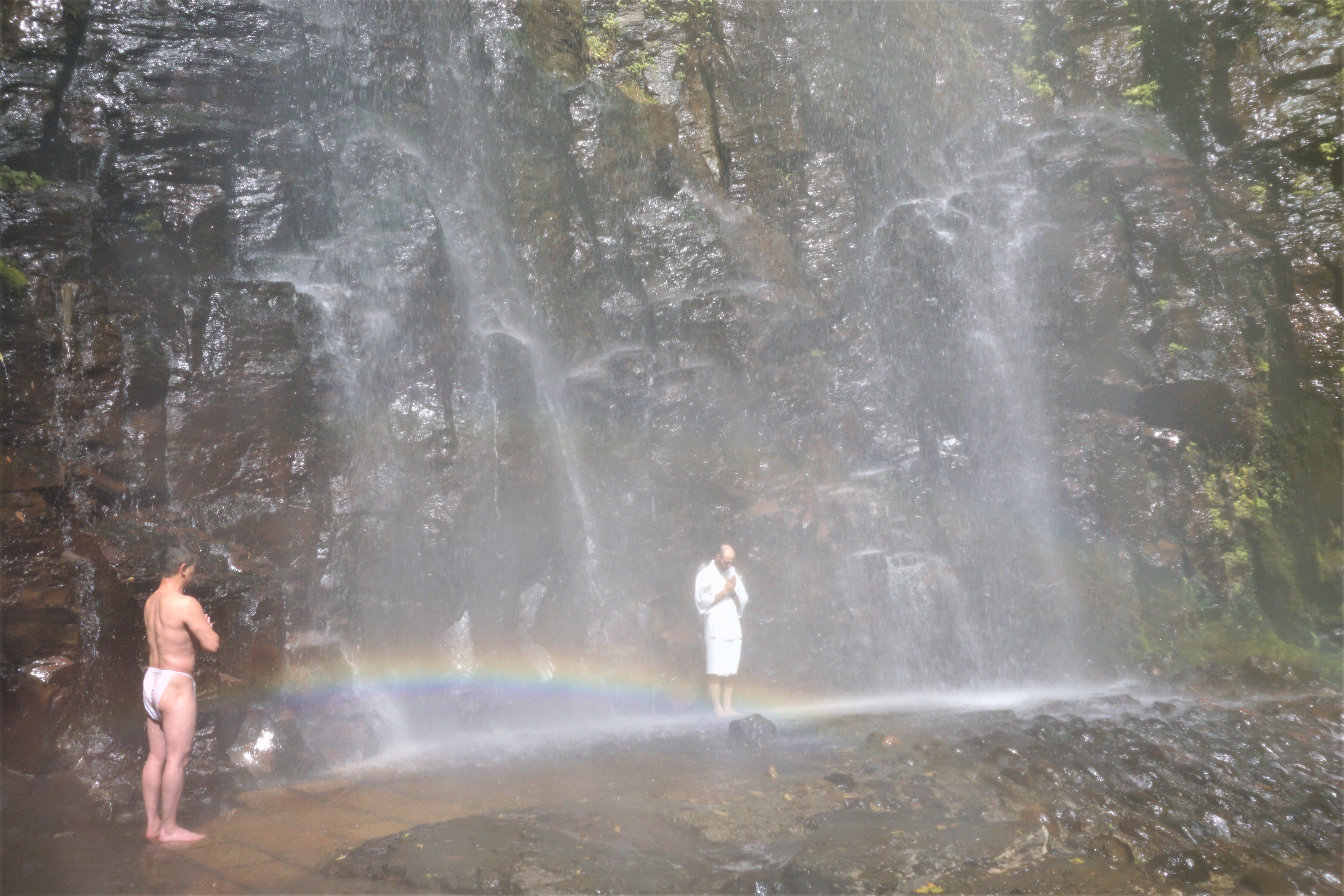
As a qualified sendatsu leader, he provides the clothing and coaches you through the necessary prayers and rituals and instructs you on the finer points of breathing and meditating under the heavy weight of the water. It’s an incredible experience and an amazing opportunity to participate in something so sacred, so out of the ordinary and so synonymous with the Ontake Kodo.
I've had the honor of joining Kurumizawa-san twice at Kiyotaki Falls, and each time it has been a truly special event. It's hard to explain the paradox of achieving a still and silent mind and body while standing under a loud, cold, pounding waterfall. It's a primal sensation that nothing can really prepare you for, but one that can prepare you for a whole new dimension of thought and introspection.
Shojin Ryori and Shojin Otoshi Cuisine
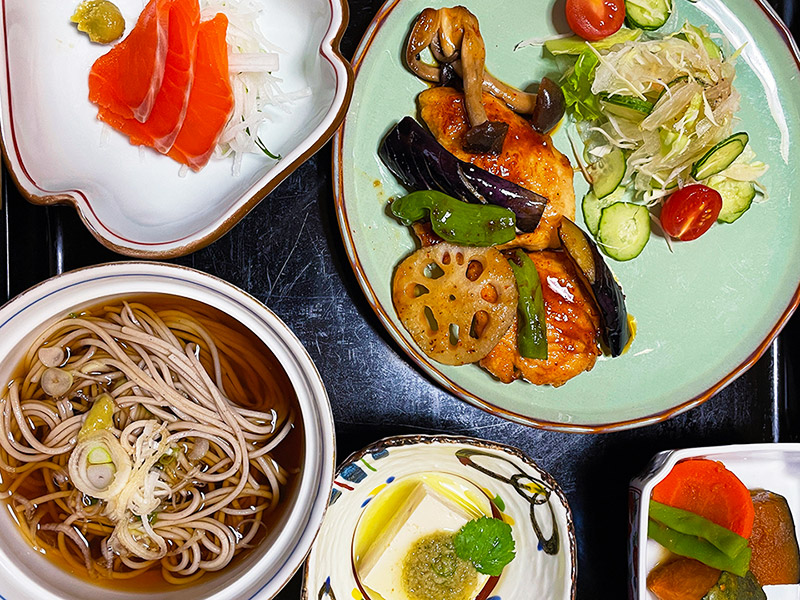
The faithful, who travel with their ko to the mountain each summer on pilgrimage, typically stay in one of the area's ryokan lodges while performing their rituals at the foot of Ontake before making the trip to the summit. During this time meat and alcohol are forbidden, and shojin ryori, a special type of vegetarian food prepared in accordance with Buddhist traditions, is served instead.

Once a pilgrimage has been completed and climbers come back down from the mountain, they are able to break their meat and alcohol fast and are served shojin otoshi: a non-vegetarian meal that celebrates the completion of their devotion and a return to an unrestricted diet. It is possible to arrange one of these fantastic meals through Kurumizawa Ryokan for your post-waterfall meditation feast, and like the whole Ontake Kodo experience in general—I simply can't recommend it enough.
Update:2021/11/29




